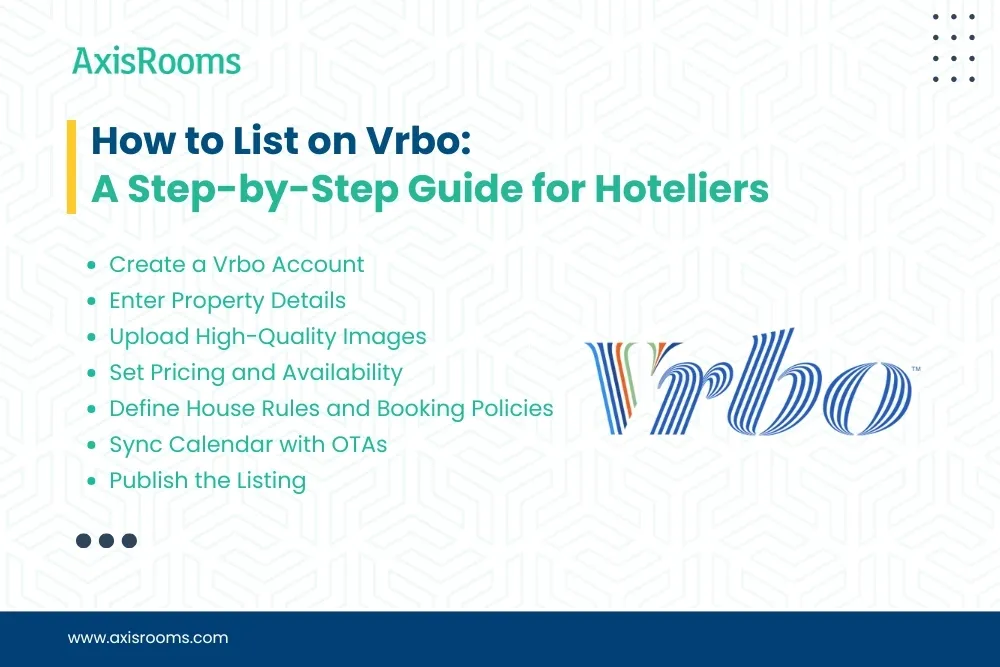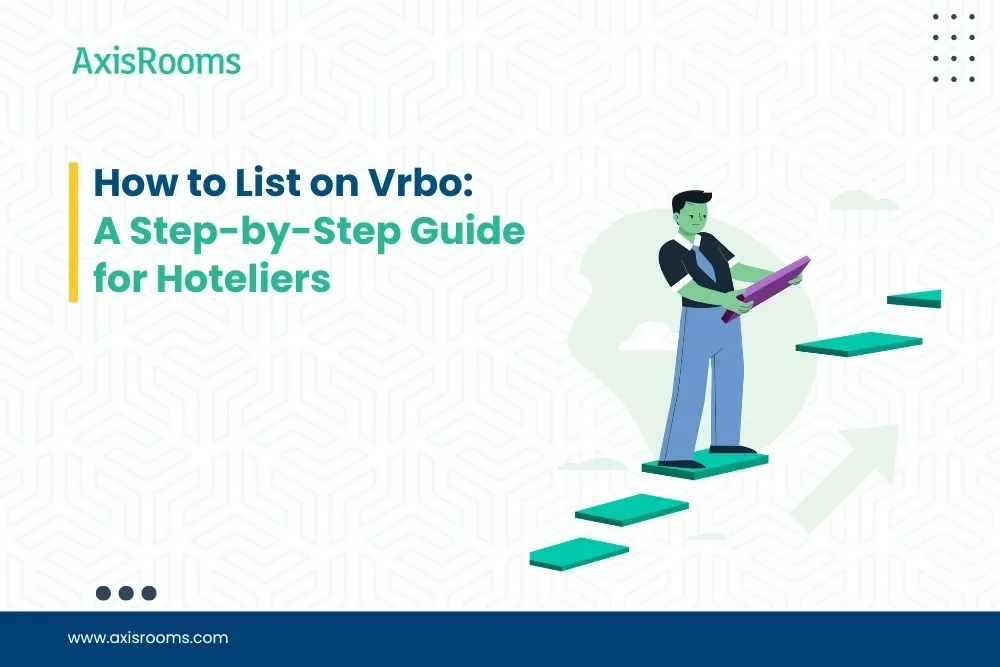As the hospitality industry evolves, hoteliers are expanding beyond traditional booking platforms and embracing vacation rental listings like Vrbo. Designed for travelers seeking full-property experiences, Vrbo (a part of Expedia Group) is an ideal channel for boutique hotels, resorts, villas, and serviced apartments. With longer average stays and higher-value bookings, Vrbo gives hoteliers the opportunity to diversify revenue and attract new market segments.
This step-by-step guide is tailored specifically for hoteliers who want to list property on Vrbo, optimize visibility, and convert interest into direct bookings.
1. Why Vrbo is Valuable for the Hospitality Sector
- Audience Reach: Vrbo appeals to families and groups who prefer entire spaces, making it ideal for villas, resort units, and boutique accommodations. According to recent data, 23% of travelers are now looking for any excuse to get away with loved ones, sparking what's known as the "go-ccasion" trend, with work-related achievements being the leading reason for these getaways.
- Expedia Ecosystem: Listings on Vrbo benefit from exposure across Expedia Group sites, including HomeAway and KAYAK.
- Control & Flexibility: Hotels retain control over policies, guest eligibility, and damage protection options.
- Higher Booking Value: Longer stays and group bookings increase average daily rate (ADR) and occupancy.
2. Pre-Listing Checklist for Hoteliers
Before listing on Vrbo, make sure your property meets these requirements:
3. How to List on Vrbo: Step-by-Step for Hoteliers

Step 1: Create a Vrbo Account
Sign up at Vrbo.com using your business credentials. If you manage multiple units, consider listing each room type as a separate property.
Step 2: Enter Property Details
Add your hotel or unit’s address, property type, room count, and sleeping arrangements. Use your PMS data to populate these fields accurately.
Step 3: Upload High-Quality Images
Include:
- Bedroom and living areas
- Bathroom amenities
- Outdoor spaces and common areas
- Facilities like spa, pool, or gym
Ensure all images are optimized and include alt-text such as "VRBO property listing hotel suite."
Step 4: Set Pricing and Availability
Use your hotel management software or channel manager to:
- Set base nightly rates
- Define minimum stay periods
- Apply seasonal rate adjustments
Step 5: Define House Rules and Booking Policies
Include:
- Guest age restrictions
- Damage protection requirements
- Check-in/out windows
- Cancellation policies
Step 6: Sync Calendar with OTAs
Avoid double bookings by integrating your Vrbo calendar with your OTA distribution system or PMS. Prioritize strong PMS integrations to streamline your listings and maximize exposure.
Step 7: Publish the Listing
Once everything is set, review and submit your listing. Vrbo generally approves listings within 24–48 hours.
4. Optimization Tips for Maximum Visibility
Craft Compelling Titles and Descriptions
Examples:
- "Luxury Beachfront Villa with Infinity Pool in Phuket"
- "Family-Friendly Boutique Hotel with Spa and Kids’ Playroom"
Incorporate keywords such as "vacation rental listing," "property management," and "VRBO property listing."
Use Hotel Management Software for Rate Strategy
Leverage your RMS or PMS to implement dynamic pricing. Offer bundled deals (e.g., breakfast included, free airport transfer) to improve ADR.
Respond Promptly to Inquiries
Response time affects your Vrbo search ranking. Use automated messaging to maintain quick replies.
Encourage Guest Reviews
Prompt guests post-stay to leave reviews. Positive guest reviews improve listing credibility and SEO visibility.
Maintain Calendar Accuracy
Use a channel manager to sync your calendar across platforms like Booking.com, Airbnb, and Expedia.
5. Hotel vs. Traditional Vacation Rental: A Comparison
6. Post-Listing: Managing for Growth
Monitor Booking Trends
Use your PMS analytics or Vrbo dashboard to track occupancy, conversion rate, and seasonality. Be aware that in Q1 2024, Vrbo saw a 2.5% decrease in bookings compared to Q1 2023, dropping to 22% of total bookings across platforms, while direct bookings increased by 0.6%.
Optimize for Guest Experience
Enhance reviews by offering:
- Personalized welcome notes
- Complimentary services (e.g., Wi-Fi, breakfast)
- Local activity guides
Leverage Guest Reviews
Highlight strong guest reviews in your listing description and use quotes in marketing materials.
Adjust Pricing Frequently
Track competitor rates and demand patterns to update pricing weekly using automated rate management tools. Apply efficient revenue management strategies for independent hotels to make timely decisions and stay competitive.
Promote Special Offers
Advertise last-minute discounts, extended stay deals, or free night offers within your Vrbo listing.
Conclusion
Vrbo is more than just a vacation rental platform—it’s a gateway for hoteliers to tap into high-value leisure travelers seeking personalized stays. By leveraging hotel management software, syncing with OTAs, and providing top-tier service, your Vrbo property listing can become a powerful revenue stream. Follow this guide, optimize your listing continuously, and watch your bookings grow.
Ready to attract more global guests through Vrbo? Start your listing process today and position your hotel or resort for success in the short-term rental space.


